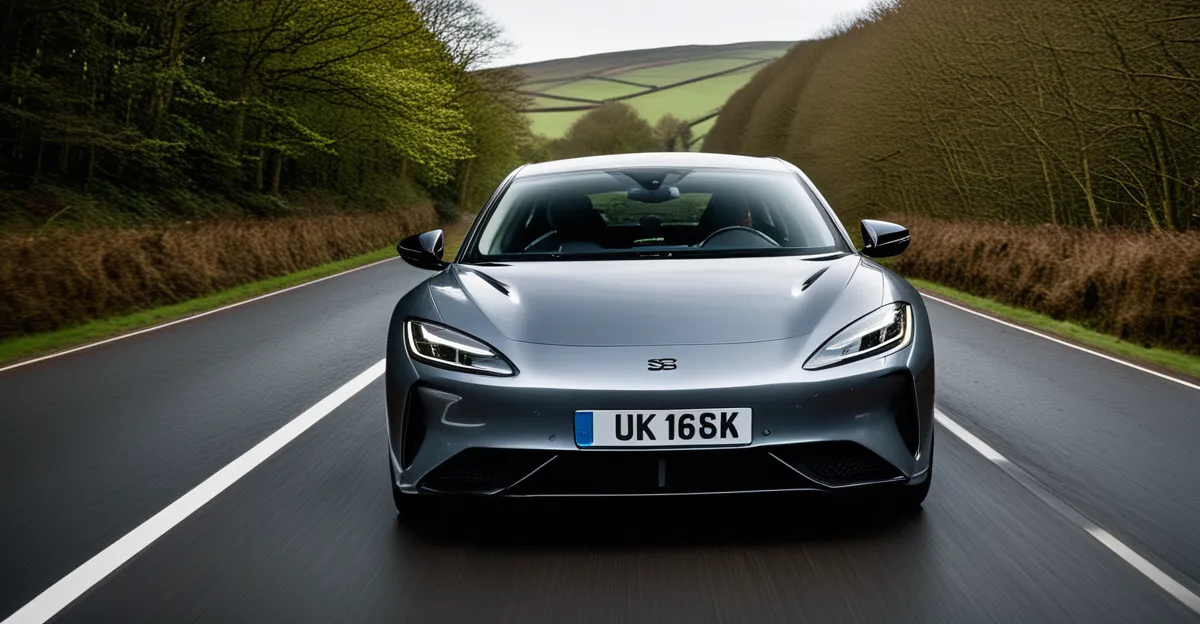Immediate Changes in UK Commuting Due to Automotive Innovations
Recent UK automotive innovations have significantly reshaped daily commuting by enhancing accessibility to electric vehicles (EVs) and upgrading infrastructure. Expanded networks of fast-charging stations now allow more commuters to confidently switch to EVs, reducing range anxiety and facilitating longer trips. This wider availability boosts technology adoption, encouraging a substantial portion of daily travelers to opt for cleaner transportation methods.
Integration of connected vehicle technologies is another key factor transforming commuting routines. Real-time data exchange between vehicles and traffic management systems enables optimized routing, decreasing travel times and congestion. Commuters experience smoother journeys, supported by smarter traffic signal adjustments and dynamic route changes.
Topic to read : How are UK automakers tackling the skills gap in the industry?
Government policy incentives further accelerate these shifts. Subsidies for electric car purchases and grants for home charging stations incentivize adoption, while urban schemes promote low-emission vehicles in city centres. These combined efforts shape commuter choices by making innovative automotive options more affordable and practical.
Together, these changes realize immediate effects—commuters enjoy reduced costs, improved convenience, and a growing confidence in technology-driven mobility. The continuous evolution of technology adoption ensures these patterns will only deepen, reflecting a decisive move toward a more sustainable and connected commuting landscape in the UK.
In parallel : How are UK automakers enhancing vehicle safety standards?
Key Technological Advancements Shaping the Commute
Technological progress in electric vehicles (EVs) significantly influences UK automotive innovations, particularly by improving range, affordability, and charging speed. Advances in battery technology allow commuters to travel longer distances with reduced charging times, making EVs more practical for daily commuting. These improvements drive broader technology adoption, facilitating the transition to cleaner transport.
Simultaneously, developments in autonomous vehicles and driver-assist features are beginning to reshape daily routines. Semi-autonomous systems enhance safety and reduce stress during long commutes, while full autonomy promises even greater convenience in the near future. These technologies also integrate with existing connected vehicle platforms.
Vehicle connectivity combined with expanding smart infrastructure plays a crucial role in commuting efficiency. Smart traffic management systems communicate in real-time with connected cars to optimize routing, minimizing congestion and emissions. Urban areas increasingly deploy telematics technologies, supporting dynamic traffic signals and incident alerts that directly impact commuter experience.
Together, these advancements underline a profound shift in daily commuting patterns, driven by a synergy of electric vehicles, autonomous capabilities, and intelligent infrastructure within the UK automotive innovations landscape.
Policy Changes and Their Effects on UK Commuters
Government policies in the UK play a pivotal role in shaping commuter behaviour amid the wave of automotive innovations. The introduction of congestion and clean air zones in major cities directly targets emission reductions by discouraging the use of older, polluting vehicles in high-traffic areas. This compels many commuters to switch towards low-emission or electric vehicles, aligning with broader sustainability goals.
Subsidies and financial incentives further stimulate this shift. The UK government offers substantial subsidies for electric vehicle purchases, reducing upfront costs and accelerating technology adoption. Grants for installing home charging stations complement this by overcoming infrastructure barriers, making EV ownership more accessible and practical.
Additionally, workplace schemes have emerged as influential factors in commuter choices. Employers encourage sustainable commuting by providing perks such as discounted EV charging at work or benefits for low-emission vehicle users. These schemes not only increase EV adoption but also integrate sustainability into daily commuting habits.
Together, these policy measures create a supportive ecosystem that addresses costs, convenience, and environmental impact, encouraging commuters to embrace cleaner, smarter transportation options. Through such incentives and regulatory frameworks, the UK government actively steers the future of commuting towards greater sustainability and technological integration.
Practical Implications for Daily Commuters
Daily commuting in the UK is experiencing practical shifts due to technology adoption within the automotive sector. One immediate effect is on commuting convenience: electric vehicles (EVs) offer reduced refuelling times thanks to faster charging infrastructure. This decreases downtime compared to traditional fuel stations, benefiting busy commuters. Additionally, connected vehicle technologies enhance user experience by providing real-time traffic updates, enabling dynamic route adjustments that avoid delays and congestion.
Cost savings are significant for many. EV owners generally spend less on fuel and vehicle maintenance, which lowers overall commuting expenses. This economic benefit supports wider adoption, especially among cost-conscious drivers balancing weekly budgets.
Safety improvements also play a pivotal role in shaping commuter confidence. Advanced driver-assist systems reduce accident rates by alerting drivers to hazards or maintaining safe distances automatically. These features make daily travel less stressful and more secure, fostering positive perceptions around new automotive technologies.
Together, these practical advantages—lower costs, increased safety, and enhanced convenience—contribute to a smoother daily commuting experience, encouraging further embrace of innovations transforming the UK automotive landscape.
Immediate Changes in UK Commuting Due to Automotive Innovations
The rise of UK automotive innovations is swiftly transforming daily commuting by expanding access to electric vehicles (EVs) and improving charging infrastructure. More public and private fast-charging stations reduce range anxiety, making EVs a practical option for many commuters. This increased accessibility directly supports greater technology adoption, encouraging a shift from traditional petrol cars to cleaner alternatives.
In addition, the integration of connected vehicle technologies is significantly enhancing commuter efficiency. Vehicles now communicate with traffic systems in real-time, enabling smarter route optimisation that cuts down travel times and eases congestion. This seamless data exchange improves the overall commuting experience and encourages wider acceptance of technological advancements.
Current government incentives further shape commuter behaviour by making EV ownership and usage more affordable. Subsidies for vehicle purchases and grants for home chargers lower upfront costs, motivating more people to embrace electric options. The combined impact of infrastructure improvements, connected vehicle tech, and policy incentives is driving immediate and tangible changes in UK commuting patterns, boosting sustainability and convenience through advanced automotive technologies.
Immediate Changes in UK Commuting Due to Automotive Innovations
Recent UK automotive innovations have dramatically altered daily commuting, primarily through expanded access to electric vehicles (EVs) and improved charging infrastructure. The rollout of fast-charging stations across urban and rural areas reduces range anxiety, making EV ownership increasingly practical. This infrastructure growth directly supports wider technology adoption, as commuters feel more confident switching from traditional petrol cars to electric alternatives.
The integration of connected vehicle technologies also plays a crucial role. Vehicles now exchange data in real-time with traffic management systems, enabling intelligent route optimisation that decreases journey times and eases congestion. For example, dynamic traffic signals and adaptive navigation reroute drivers around incidents, enhancing commuter efficiency and satisfaction.
Moreover, current policy incentives significantly influence commuter choices. Subsidies for EV purchases, grants for home charger installations, and urban low-emission zones collectively lower costs and improve convenience, encouraging drivers to adopt cleaner transport options swiftly. These combined factors underscore how the tangible impact of automotive innovations reshapes UK commuting patterns, fostering a shift towards sustainable, technology-driven mobility solutions in everyday travel.





